15 Things to Eat on GLP-1 Medicines to Get Amazing Results

GLP-1 medications such as Ozempic work by helping to keep blood sugar levels in check, and blunting appetite. "Everyone's hearing about this drug these days," W. Scott Butsch, MD, MSC, tells Cleveland Clinic. "People are excited. We finally have medications that are highly effective in treating obesity for the long term, and it's a game-changer." While there is no specific "Ozempic diet", eating a healthy, balanced diet full of whole foods that don't spike blood sugar is ideal, and will only encourage more weight loss and overall health. Here are 15 foods to always keep in rotation while taking Ozempic.
Avocados
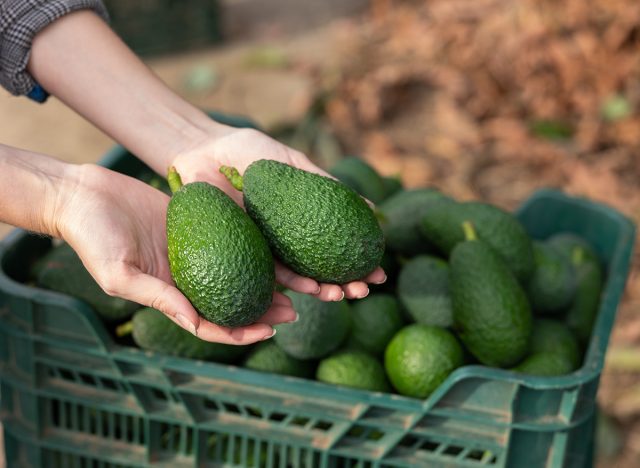
Avocados are high in healthy fats and fiber. "Avocados, which are rich in healthy unsaturated fatty acids, micronutrients, and fiber, have been shown to improve post-meal blood glucose and insulin concentrations," Kathy Beerman, PhD, tells the American Society For Nutrition. "Study results showed that daily avocado intake for 12 weeks had beneficial effects on blood glucose."
Fatty Fish
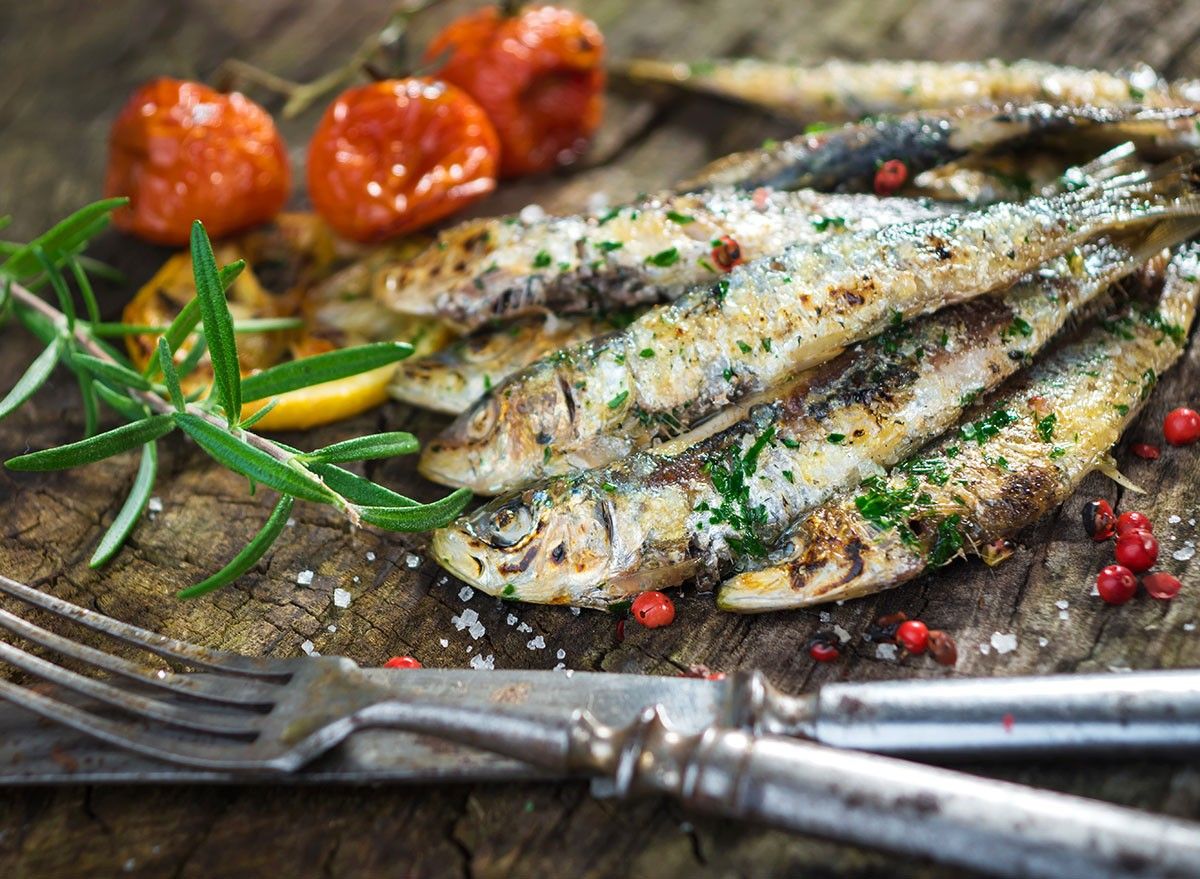
Fatty fish is a great choice of protein for a low-inflammation, diabetes-friendly diet. "Omega-3 fats may help to reduce the risk of heart disease and inflammation," says the American Diabetes Association. "Fish high in these healthy fats are sometimes referred to as 'fatty fish.' Salmon is well known in this group. Other fish high in omega-3 are herring, sardines, mackerel, trout and albacore tuna."
Healthy Nuts
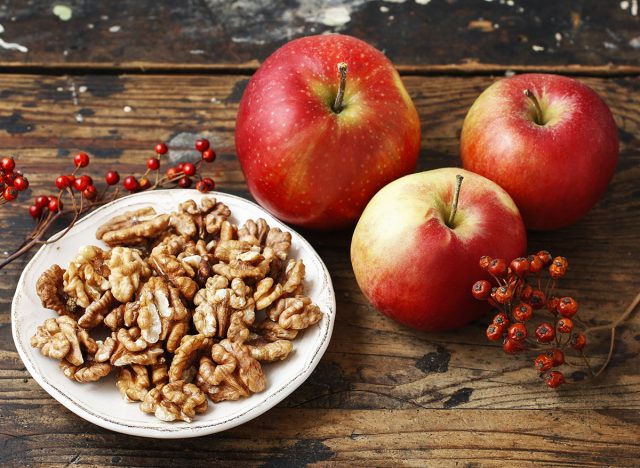
Nuts have protein and healthy fats. "An ounce of nuts can go a long way in getting key healthy fats along with helping to manage hunger," says the American Diabetes Association. "In addition, they offer magnesium and fiber. Some nuts and seeds, such as walnuts and flax seeds, are a good source of omega-3 fatty acids."
RELATED: 20 Things to Avoid While on Ozempic
Blueberries

Blueberries are a healthy, nutritious snack. "The advantage of eating a low-carbohydrate fruit is that you can eat a bigger portion," M. Regina Castro, MD, tells the Mayo Clinic. "But whether you eat a low-carb or high-carb fruit, as long as the serving size contains 15 grams of carbohydrates, the effect on your blood sugar is the same."
Broccoli
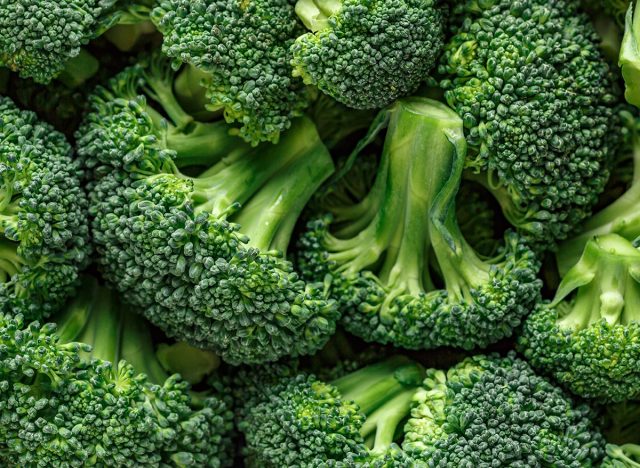
Research shows broccoli can help reduce blood sugar. The magic ingredient? Sulforaphane.
"There are strong indications that this can become a valuable supplement to existing medication," says Anders Rosengren, Docent in Metabolic Physiology at the University of Gothenburg.
RELATED: What Happens to Your Body When You Stop Taking Ozempic
Eggs
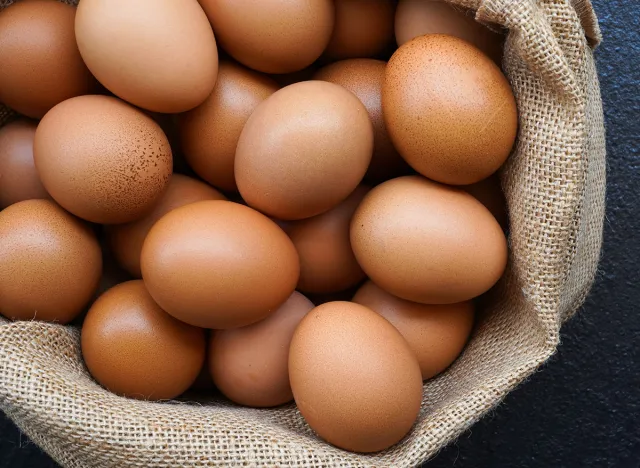
Eggs are rich in protein and healthy fats. "Even for my patients with high cholesterol, I don't tell them to avoid eggs," Dr. Helen Delichatsios, an assistant professor of medicine at Harvard Medical School, tells Harvard Health. "I'm fine with an egg a day on average, as long as it's not accompanied by bacon, hash browns, muffins, and the like."
Water
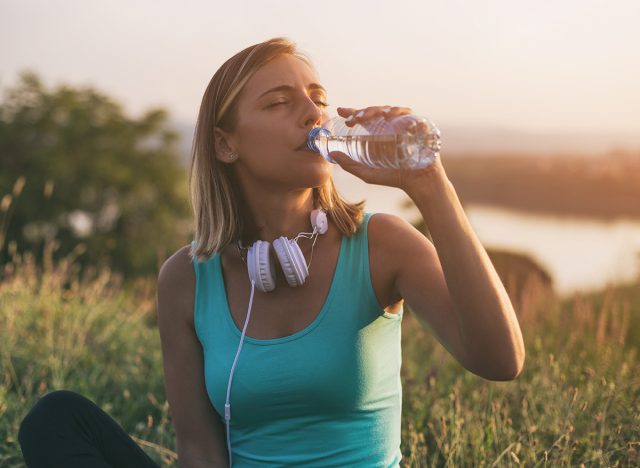
"Water can suppress your appetite and maybe boost your metabolism for a short amount of time," says UnityPoint Health. "Research suggests the more hydrated you are, the better able your body is at just about everything from thinking to making exercise easier."
RELATED: 20 Possible Ozempic Side Effects
Brussels Sprouts
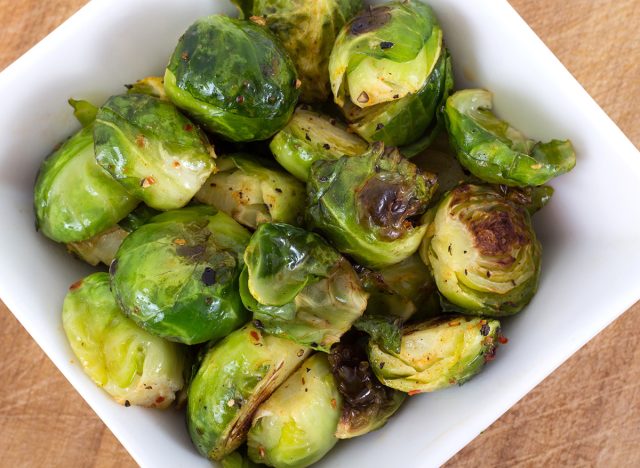
"Brussels sprouts contain phytonutrients, plant-based compounds that lower inflammation and reduce cancer risk," Emily Weeks, RDN, LD, tells Diabetes Food Hub. "They also contain nutrients that help to maintain healthy blood sugar (blood glucose) and blood pressure. One cup of sprouts also has three grams of plant-based protein."
Strawberries
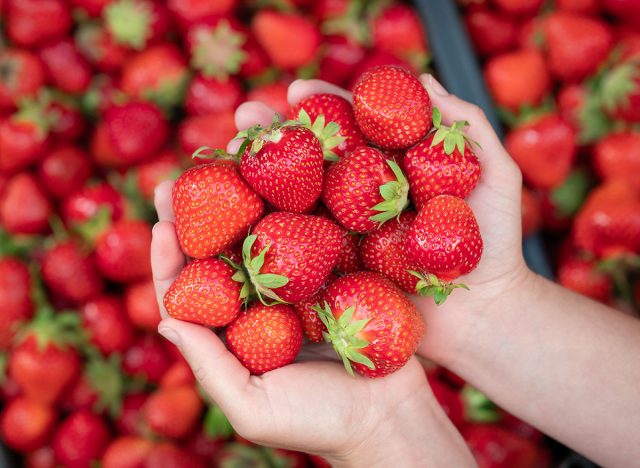
Strawberries are nutritious, delicious, and low-calorie. "As sweet as they taste, strawberries contain the lowest amount of sugar per serving," says St. Vincent's Medical Center. "Research shows they help the body better use insulin, lowering the amount needed to manage your blood sugar after a meal. Raspberries are also loaded with fiber and low in sugar."
RELATED: 20 Things You Need to Know About Ozempic and Weight Loss
Whole Grains
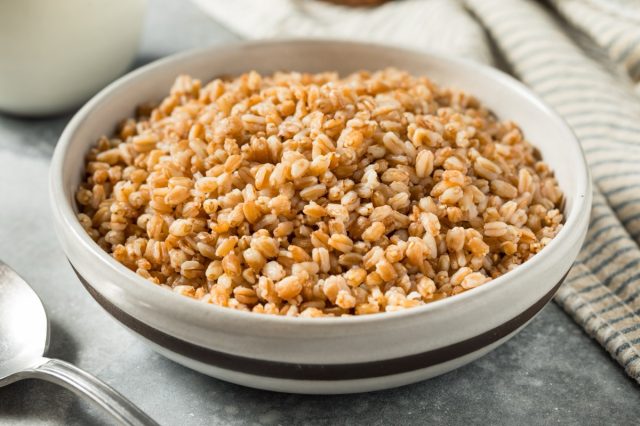
"Whole grains are rich in vitamins and minerals like magnesium, B vitamins, chromium, iron and folate," says the American Diabetes Association. "They are a great source of fiber too. Some examples of whole grains are whole oats, quinoa, whole grain barley and farro."
Tomatoes
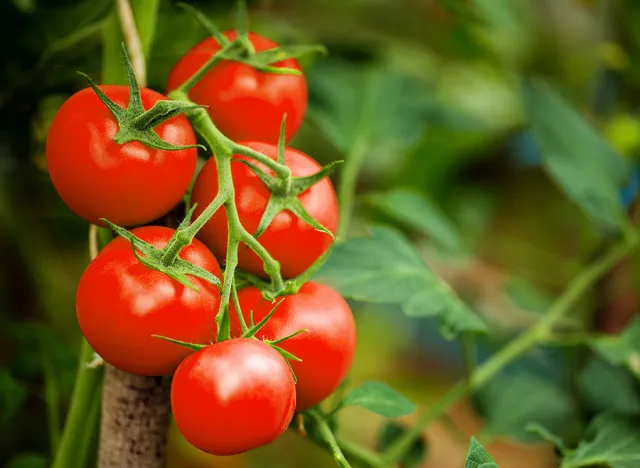
Tomatoes are a great choice on a whole foods, lower-sugar diet. "Tomatoes, similar to carrots, are considered a non-starchy vegetable in meal planning for diabetes," Pam Noonan, MS, RN, CDE, tells Sutter Health. "This means that the amount of naturally occurring sugar is minimal in a serving. The bottom line is that tomatoes are not high in total carbohydrates or sugar and are an excellent source of B vitamins like folate, and vitamins A, C, E and K."
RELATED: 20 Incredible Ozempic Success Stories of All Time
Extra Virgin Olive Oil
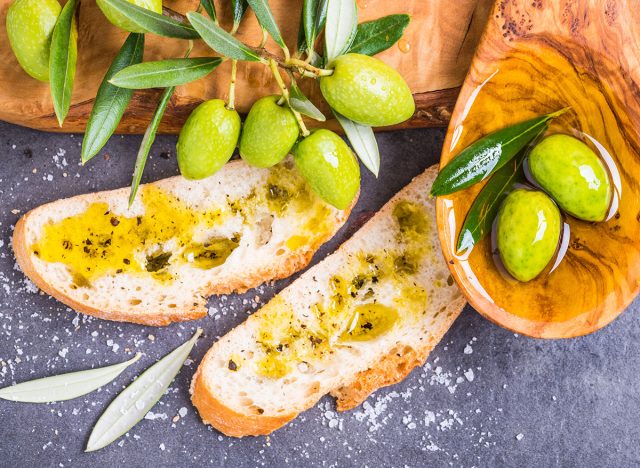
Extra virgin olive oil is considered one of the "healthy" fats. Research shows that olive oil can actually lower blood glucose and cholesterol. "Lowering blood glucose and cholesterol may be useful to reduce the negative effects of glucose and cholesterol on the cardiovascular system," says Francesco Violo from Sapienza University.
Greek Yogurt
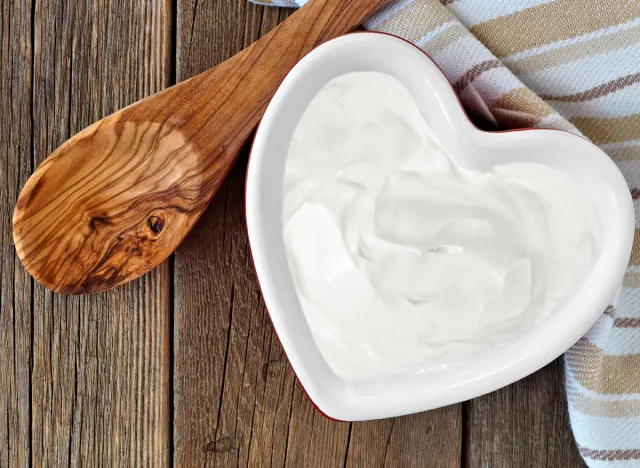
Greek yogurt is full of protein and calcium. "You may have heard that milk and yogurt can help build strong bones and teeth," says the American Diabetes Association. "In addition to calcium, many milk and yogurt products are fortified to make them a good source of vitamin D. More research is emerging on the connection between vitamin D and good health."
Legumes
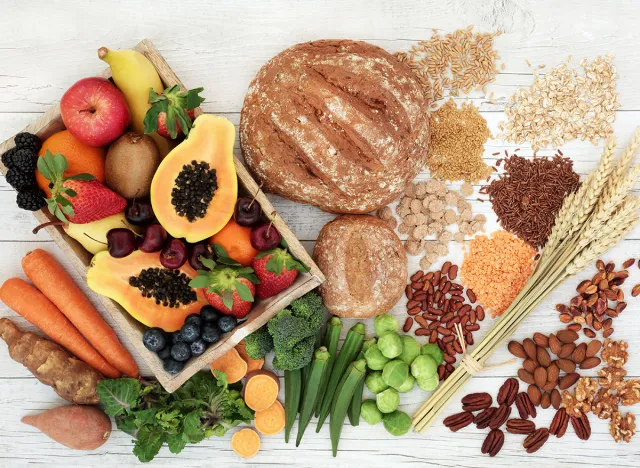
Legumes are a delicious, weight-loss-friendly choice. "Let's clarify that we're talking about beans, folks," Monique Tello, MD, MPH, tells Harvard Health. "Beans, lentils, peas, chickpeas, it's all good… and good for you. Legumes are amazingly nutritious, high in protein and fiber, low in fat, and low in glycemic load."
RELATED: 15 Foods to Avoid if You Want to Have a Flat Stomach
Cauliflower
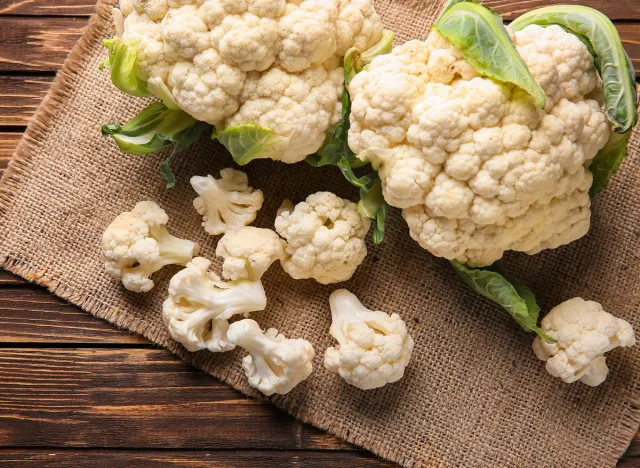
"A good alternative to potatoes as a side dish are beans or cauliflower rice, a popular culinary newcomer," says the American Medical Association. "The glycemic load is much lower, and cauliflower includes several key nutrients."
💪🔥Body Booster: Eat whole foods with plenty of lean proteins and healthy fats. And if you enjoyed this article, take advantage of these 20 Superfoods for People Over 50.




